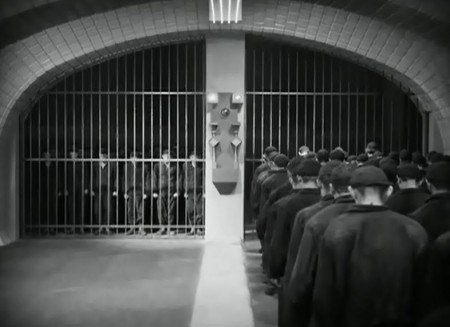A Movie Analysis of The Workers
The movie opens by showing the workers and their city, situated deep below the earth’s surface. They are shown dressed alike, walking in sync, holding their heads down in submission, resignation and desperation. Throughout the movie, the human cattle is depicted as being physically and mentally exhausted, highly impressionable and, let’s say it, all-around dumb. Like a flock of sheep, the workers move in crowds, are very impressionable and can easily be deceived. This description of the masses corroborates those of Walter Lippmann, an American thinker who, five years earlier in Public Opinion, compared the general public to a “bewildered herd” that is not qualified to manage its own destiny. Joseph Goebbels, the head of propaganda of the Nazi regime, was also in accord with the movie’s conception of the general public. Hitler famously said “How fortunate for leaders that men do not think”.
The workers labor in a monstrous machine, a hellish industrial complex where they must accomplish repetitive and dehumanizing tasks. At one point, the machine is compared to Moloch, the ancient Semitic deity honored by human sacrifices.
The tasks assumed by the workers are purely mechanical, needing absolutely no brain power, making them nothing more than an extension of the machine.




No comments:
Post a Comment